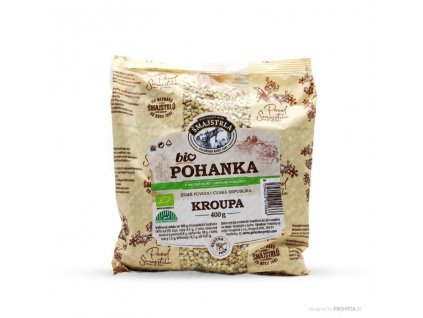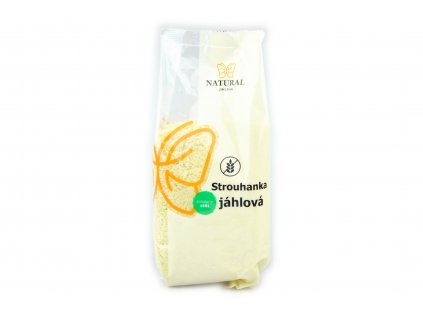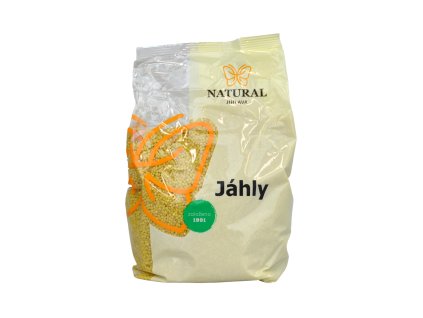Millet Europe 500 g BIO BIO NEBIO
Related products

Product detailed description
Millet is actually peeled millet and is a wonderful versatile dish. Whether as a side dish (for example, with tomato sauce), a soup stock, as a porridge (add more water), a base for salads (for example, instead of couscous), a filling, meatballs and sweet casseroles, or fried with vegetables and meat in Asian style, millet will not disappoint. We get the popular millet balls by mixing boiled millet, honey, coconut, a little water and raisins together in a ratio that suits our taste. We can also add coconut milk, a little butter, cocoa, nuts instead of coconut, and the like. We form balls from the mixture, which we wrap in coconut or nuts and let cool.
Is it necessary to wash millet? Most Czech preparation instructions call for rinsing the millet with hot water, while Anglo-Saxon sources recommend rinsing the millet with cold water at most. We therefore investigated whether it is really necessary to blanch millet before cooking. It is advisable to rinse millet with cold water before cooking until the water runs clear. However, it is not necessary to blanch it if we do not mind the slightly burning taste. This is not bitterness, but a similar taste that remains in our throat after young olive oil. This taste is caused by substances that occur naturally on the surface of millet, and the taste is not too pronounced after rinsing with cold water. Blanching millet practically gets rid of it completely. However, we are talking about fresh millet here. The problem with millet is that it goes rancid relatively quickly. It is therefore advisable to consume it as soon as possible after purchase and not store it unnecessarily. We can recognize rancid millet by the fact that it becomes bitter. Blanching with hot water does get rid of the bitterness, but a better solution is to consume only fresh millet, which still has a long way to go before the end of its minimum shelf life. If we don't consume the whole bag at once, we can store the millet well-wrapped in the refrigerator - it certainly won't harm it. So the conclusion is: Rinsing with cold water is enough if the millet is fresh and we don't mind the slightly pungent taste, rinse with hot water if we don't like the taste. And we'd rather throw old millet straight away in the bin!
Preparation instructions: Blanch the millet three times with hot water (not necessary), rinse with cold water and cook in a ratio of 1:1.8 (millet:water) over low heat until the water is absorbed (approx. 15 minutes).
WEIGHT: 500 g
COUNTRY OF ORIGIN: Poland/Ukraine
WARNING FOR ALLERGICIANS: The product does not contain any allergens or traces of them.
NUTRITION DATA PER 100 G:
| Energy value | 1511 kJ/357 kcal |
|---|---|
| Fats | 3.9 g |
| of which saturated fatty acids | 0.9 g |
| Carbohydrates | 69 g |
| of which sugars | 1.4 g |
| Fibre | 3.8 g |
| Proteins | 9.8 g |
| Salt | 0.01 g |
NAME AND STORAGE: Millet - millet peeled. Store dry, protect from heat.


CZ-BIO-001
Agricultural production outside the EU

Additional parameters
| Category: | Millet |
|---|---|
| Weight: | 0.5 kg |
| EAN: | 8594052881424 |

Be the first who will post an article to this item!

















